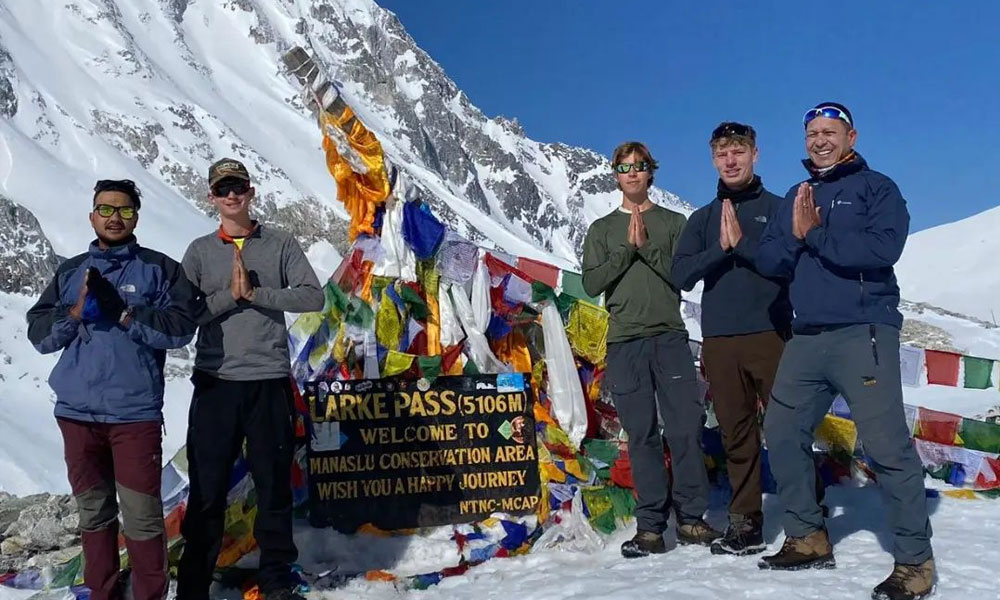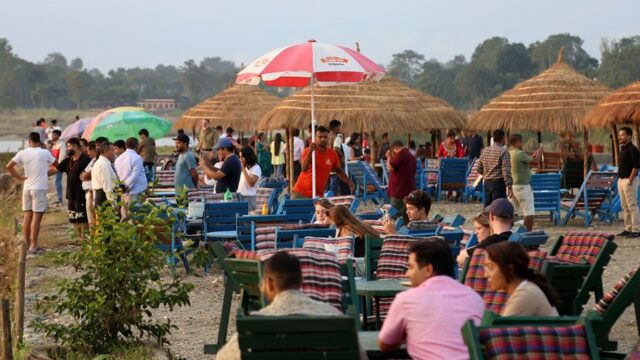The Manaslu region in northern Gorkha has witnessed a record-breaking influx of foreign tourists in the current fiscal year. According to the Manaslu Conservation Area Project (MCAP), a total of 12,259 foreign tourists visited the Manaslu region by the end of the month of Baisakh (mid-May) in the ongoing fiscal year 2080/81 (2023/24), the highest number recorded so far.
Santosh Sherchan, Chief of MCAP, confirmed that the number of tourists visiting the region has seen a steady increase over the past few years. In the fiscal year 2079/80, the number of tourists reached 9,782, whereas 7,705 tourists were recorded in 2078/79. The figures were significantly lower in 2077/78 when only 194 tourists visited the region, largely due to the impact of the COVID-19 pandemic. Prior to the pandemic, the numbers were relatively higher, with 5,338 tourists recorded in FY 2076/77 and 7,655 in FY 2075/76.
MCAP had set a target of attracting 12,500 tourists in the current fiscal year. With 12,259 arrivals already recorded by Baisakh, the project has achieved 98.07% of its target, with expectations high that the final tally will exceed the goal by the end of the fiscal year. Chief Sherchan expressed optimism that the increasing trend in tourist arrivals will continue, contributing significantly to local economic development and the promotion of eco-tourism in the Manaslu region.
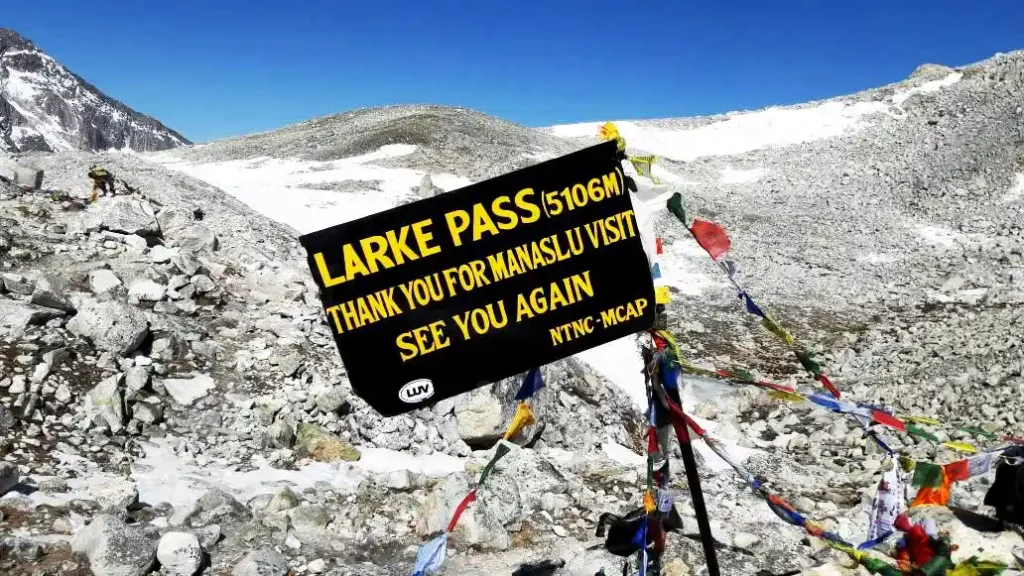
The Manaslu region, known for its remote beauty, cultural richness, and challenging trekking routes, has become increasingly popular among international trekkers seeking an alternative to more commercialized routes such as Everest and Annapurna. The area, which was officially opened to tourists in 1995, is categorized as a restricted region. As such, visitors are required to obtain special permits from Nepal’s Department of Immigration before entering.
Manaslu Conservation Area
The Manaslu Conservation Area includes parts of Chumnubri Rural Municipality, which is composed of seven former Village Development Committees (VDCs): Sirdibas, Lho, Prok, Bihi, Samagaun, Chumchet, and Chekampar. Of these, Samagaun, Lho, Prok, and Bihi lie within the Nubri Valley, while Chumchet and Chekampar are located in the Tsum Valley, both known for their unique Tibetan-influenced culture and scenic landscapes.
To enter the conservation area, tourists from SAARC countries are required to pay an entry fee of NPR 1,000 per person, while tourists from other countries must pay NPR 3,000 per person. These fees can be paid at MCAP counters located in Bhrikutimandap, Kathmandu, or Damside, Pokhara. Tourists who fail to pay the fee at these designated counters are required to pay double the amount at check posts located in Jagat or Samagaun within the conservation area.
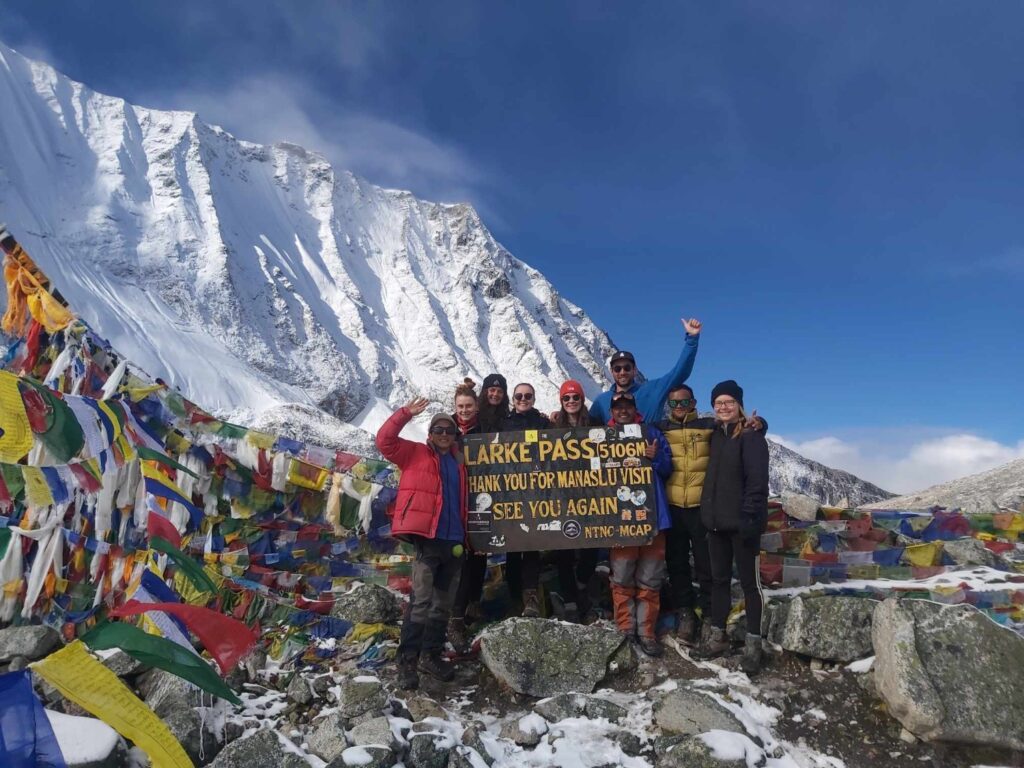
Due to the restricted status of the region, trekkers must also acquire special permits. For visits to the Tsum Valley, the Department of Immigration grants a one-week permit. During the tourist season, travelers are required to pay USD 50 per person, while the off-season rate drops to USD 25 per person. For the Nubri Valley, the fee is USD 70 per person in the season and USD 35 during the off-season. Additional charges apply if tourists wish to extend their stay beyond one week.
The growing number of visitors is a positive sign for tourism operators and local communities in the region, which have long relied on trekking and eco-tourism as a means of livelihood. The Manaslu trek, which offers panoramic views of Mt. Manaslu (8,163 meters – the eighth highest mountain in the world), as well as rich biodiversity and cultural experiences, is considered one of the most rewarding yet less-crowded trekking experiences in Nepal.
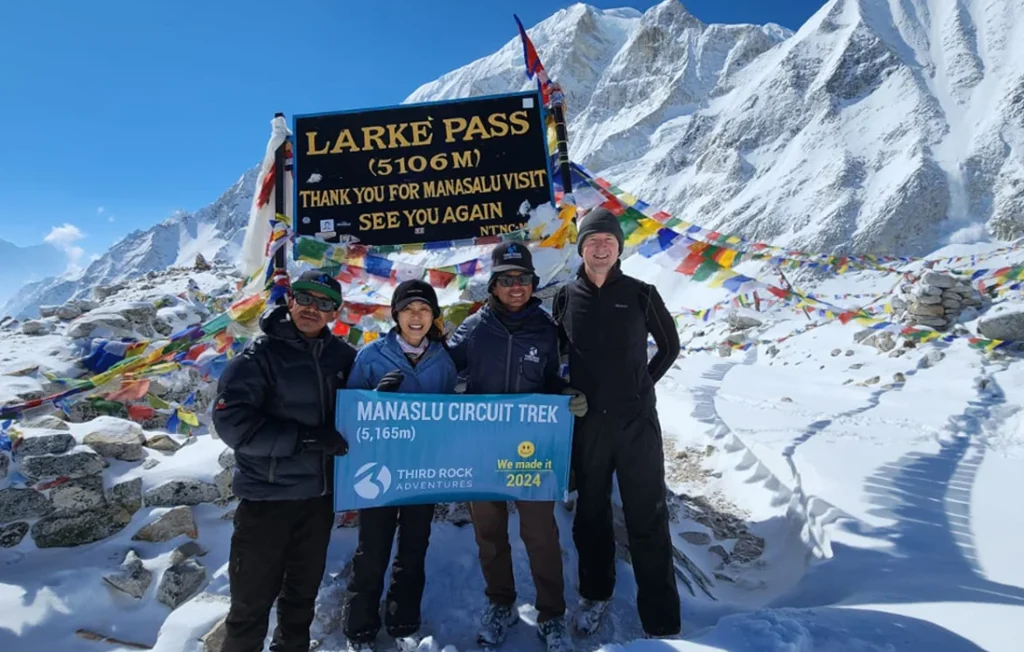
Chief Sherchan emphasized the importance of responsible and sustainable tourism to preserve the fragile ecosystem and unique cultural heritage of the Manaslu region. MCAP, working under the National Trust for Nature Conservation (NTNC), continues to play a crucial role in managing tourism flow, enforcing regulations, and promoting conservation awareness among visitors and locals alike.
With tourism gradually rebounding after the COVID-19 pandemic, local authorities and conservation bodies hope to further promote the region through targeted tourism campaigns and better infrastructure. The improved visitor numbers reflect renewed interest from the global trekking community and growing confidence in Nepal’s adventure tourism sector.
As the fiscal year draws to a close, all eyes are on whether the final count of foreign tourists visiting the Manaslu Conservation Area will set a new benchmark. If the current trend continues, the region is likely to exceed its target, reaffirming its status as one of Nepal’s most promising high-altitude trekking destinations.
